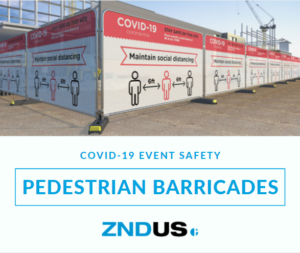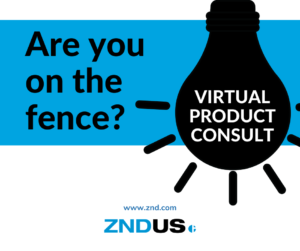How to Manage Crowds at Events During and After COVID-19
11/20/2020
The event industry has been one of the hardest-hit by the COVID-19 pandemic, and we still don’t know when things will be back to normal. After starting to loosen restrictions on gatherings, many cities are closing back down as they attempt to deal with the fall spike in cases.
Several vaccines are showing promising early results, however so there is reason to be optimistic. We will get back to normal, and when we do, there will be a lot of pent-up demand for events. Is your event business ready?
Managing large events during and after COVID demands a different level of planning and preparedness than most of us are used to. Here are three reasons you shouldn’t skimp on the preparation, and some best practices you can adapt and incorporate into your safety plan.
3 reasons safety should be your #1 priority

Most event companies say that safety is their number one priority, as it should be. Your number one goal should always be to keep staff, vendors, guests, and performers as safe as possible.
In the age of COVID-19, making safety your priority is going to require more work and investment than it has before, which can seem daunting. Here are three reasons making safety your #1 priority makes good business sense too.
Avoid liability
Here’s the reality: you could take every precaution you can think of, and an outbreak could still happen at your event. Safety measures don’t eliminate the possibility of this happening, they just reduce the likelihood.
Far from being an excuse to not do enough, however, this highlights the importance of taking every reasonable measure you can to ensure the safety of everyone involved. If there is an outbreak anyway, you want to be able to show that you did everything you could to prevent one and protect yourself from any liability.
Encourage customer confidence
It’s not just about being safe, it’s about looking safe as well. Many of the safety precautions you take are about perception as well as function. They set a tone and create an environment where people understand that organizers are taking safety seriously so they should too.
Showing your guests that you take their safety seriously is one of the best ways to encourage confidence, repeat business, and positive word of mouth. This is a scary time, and people are much more aware of the health risks of events than they used to be. All it takes is one photo of unsafe conditions for word to spread that hurts your reputation and business.
Avoid new restrictions
With many cities across the US introducing new lockdowns to deal with the fall spike in coronavirus cases, we’ve already seen how restrictions that impact events can be scaled back up in response to outbreaks. This hurts event companies.
The safer companies make their events, the less outbreaks there will be, and the less likely that the local, state, or federal government will have to reintroduce restrictions that negatively impact the industry.
Best practices for managing crowds at events
The best practices for event crowd control will depend on your unique situation—your venue capacity, location, type of event, local guidelines, and other factors. Here are some universal practices you should consider and adapt.
Make a plan
With so many moving parts, creating an overall safety plan is imperative. Think through every aspect of your event, anticipate high-risk areas, and decide on ways to mitigate those risks.
Here some questions you can ask yourself:
- Where are the choke points?
- Where do crowds gather?
- How do we enforce social distancing in queues?
- How do we encourage hand cleaning?
- Will we provide PPE to guests?
- How do we deal with sick guests or employees?
- How will we manage security to minimize contact between people?
Part of your plan should include updating relevant documents and policies such as your visitor code of conduct. You likely already have a list of rules that applies to guests, such as a list of contraband they cannot bring inside. Now is a good time to add rules about the precautions you expect guests to respect and that you will enforce—for example, wearing a mask, or maintaining a certain distance from other guests while standing in line.
Similarly, update your safety protocols and employee protocols to reflect the measures you’ve decided to take and make sure they are clearly communicated to everyone involved.
Scheduled entrance and exiting
One of the most common choke points for crowds to form is at the entrances and exits, and one of the ways to address this is with scheduled entrance and exiting.
For scheduled entrance, different ticket holders can be required to enter at different times, similar to how airlines board by groups. You could even allow guests to select their preferred entrance location and time.
Like scheduled entry, scheduled existing is a way to prevent crowds building up at choke points. How you do this will depend on the size and layout of your event. If it’s a seated event, you might do it by section. If it’s something more fluid, like a festival grounds, you could add extra exits and have an assigned exit for each ticket holder.
Spaces between parking lots
When making a safety plan, you’ll need to think about outside areas as well as inside ones. Parking spaces may need to be at least six feet apart to reduce contact during arrival and departure.
One of the simplest ways to create space between parking spaces is with traffic cones. If possible, get durable, reflective ones that can withstand being knocked over.
Queue management
Depending on the event, you may have a lot of queues—not just at entrances, but at the bathrooms, vendor stalls, or bars, to give a few examples. Proper use of pedestrian barriers and indicators will help guests maintain proper social distance while in line and prevent them from blocking walkways.
Controlled occupancy for breakout areas
Depending on your event, there may be many breakout areas where people gather–bathrooms, vendor stalls, smoking areas, bars, stores, or tents. Think through how you’ll control the amount of people in these areas at any given time. The right solution will probably be a combination of intelligent layout, pedestrian barricades, and employees to help control occupancy.
How ZND products help keep events safe
Whatever safety plan you put together, one thing is for sure: you’ll need enough event barriers in the form of temporary fencing and barricades to organize queues, separate different areas, and control the flow of foot traffic.
ZND products are specifically engineered to address many of the issues with most current temporary fence products. Our fence panels are anti-climb, easily customizable at our factory with your branding, and come with a unique serial number for easy tracking.
We also provide specially-designed storage stillages that solve the issues typically associated with stacking and moving fence panels. Finally, our panels are designed to be stabilized using cinder blocks instead of sandbags, which last much longer and result in a stronger fence.
If you are looking for high-quality, state-of-the-art temporary fence and barrier solutions for your rental business, we’d love to talk. Give us a call at 704.981.8660 or send us an email sales@znd.com for a virtual product consult.
